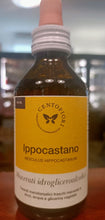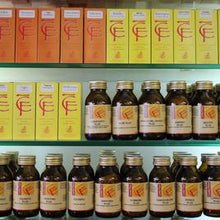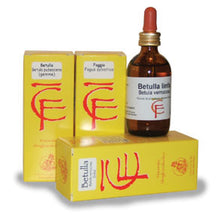The use of gem macerates is relatively recent. In fact, only a few decades have passed since the Belgian Pol Henry understood the significance of the use of these preparations for human well-being. Our company was born producing bud extracts, applying the criteria contained in the French Pharmacopoeia. But let's proceed in order by explaining what gem macerates are and how they are made. Gem macerates aim to recreate a healthy balance in the human organism, using extracts of fresh plant tissues in the process of growth. These embryonic tissues (buds, young shoots, etc.) are very active because they maintain the total anabolic faculties of the primitive vegetal cell of that plant. It is able to develop all the potential of the plant itself, a characteristic that differentiated adult cells no longer have. We can grasp the scope and value of these products if we understand the meaning of the tree for the creator himself: "The tree is the most gigantic vegetal proliferation towards the light and the set of its leaves offers the largest contact surface with the atmosphere. The tree is the largest photosynthetic workshop and its bud is the best synthesis of its embryonic adaptation to the largest production." (Pol Henry). Bud macerates are obtained by maceration in hydroglyceralcohol solvent (water + alcohol + glycerin) of fresh plant embryonic tissues. The following are used from the plant: buds, young shoots, young roots, buds, catkins, internal rinds of young branches and roots, seeds and any other embryonic tissue. The plant tissues used are all of meristematic origin which expresses a unique concept: the plant embryonic tissue. Pol Henry takes into consideration the Middle European forest and only the tree and shrub layer. This criterion presents us with the immense advantage of using exclusively plants from the geographical area in which we live.
MACERATED BUDS
In our catalog there are 49 references, even if in fact there are 46 transformed plants. In fact, we use more parts of two (Betulla Verrucosa and Salix Alba). Let's look at its main features:
1) Of the 46 plants described, 35 are collected spontaneously and 11 come from organic or biodynamic cultivations. In this case, not only do we prefer to work with the fresh product but above all we refer to our trusted collectors and producers to avoid using frozen gems. The buds, young shoots, rinds, etc. they are all rigorously collected at the right time, when the division and cellular activity of the meristems is at its maximum. The buds must be swollen but not open...
2) Maceration of embryonic plant tissues begins within 8 – 12 hours of harvesting. The plant-solvent ratio is 1:20, i.e. one part of the plant expressed as dry weight and twenty parts of solvent. It is macerated with alcohol, glycerin and water. Alcohol denatures the enzymes and therefore blocks the enzymatic degradation that begins after harvesting the plant.
Let's not forget that it is also an excellent solvent of active ingredients. To perfect the extraction process of young plant tissues, glycerin is added. In addition to thus expanding the extractive properties of alcohol, the preservation of the particular constituents of the embryonic cells is improved. For many years we have used exclusively vegetable glycerin, obtained from molasses. Maceration takes place in glass containers and lasts at least 30 days.
3) The production rigor, the quality of the raw materials and the suitability of the materials and equipment used in the laboratory guarantee the presence of many functional constituents in our gem preparations. Obviously it is difficult to identify and classify the same classes of active ingredients that are present in mature plant extracts. However, in the meristematic tissues there are more substances and active ingredients than there are in the adult plant. They are particularly rich in enzymes, vitamins, growth factors, nucleic acids (RNA/ DNA), plant hormones (auxins, kinetins, gibberellins) as well as the active ingredients specific to the species (anthocyanins, flavonoids, etc.).
THE WORKING PROCESS
The part of the plant that interests us is collected correctly, cleaned, ground (to allow the solvent to reach all its parts, thus conveying the various components) and macerated in a quantity of solvent equal to twenty times the dry weight of the plant . The plant-solvent contact lasts at least thirty days. Let's take an example: one kilogram of fresh Ribes nigrum buds contains 75% water. Therefore the dry plant weight corresponds to 25% of the fresh weight.
We will therefore have 250 gr in one kg of fresh buds. dry and 750 gr. of water. Applying the ratio 1:20 we will have 250 gr. x 20 = 5,000 gr. which is the quantity of solvent we need to macerate one kg of fresh buds. The weight of the water contained in them must be subtracted from this weight, i.e. 750 g. Let's use the formula to understand: 5,000 gr. – 750 gr. = 4.250 gr.
It is the actual quantity of solvent to be added to the finely ground buds to complete the maceration. It will be composed of equal amounts of alcohol and glycerin. The 750 gr. of water that I need will be given to me by the plant. In fact this is the quantity contained in its embryonic tissues. After at least 30 days, the liquid is filtered through decantation and the vegetal residue is squeezed at 300 – 400 atmospheres. Then the two liquids are brought together and everything is filtered by gravity into large funnels with filters suitable for food. This is how the base of gem macerates (from the French souce) is obtained. To have the finished gem, ready for use, you need to dilute one part of the base in nine parts of a mixture composed of: 50% glycerin, 30% alcohol, 20% water. All expressed in weight.






